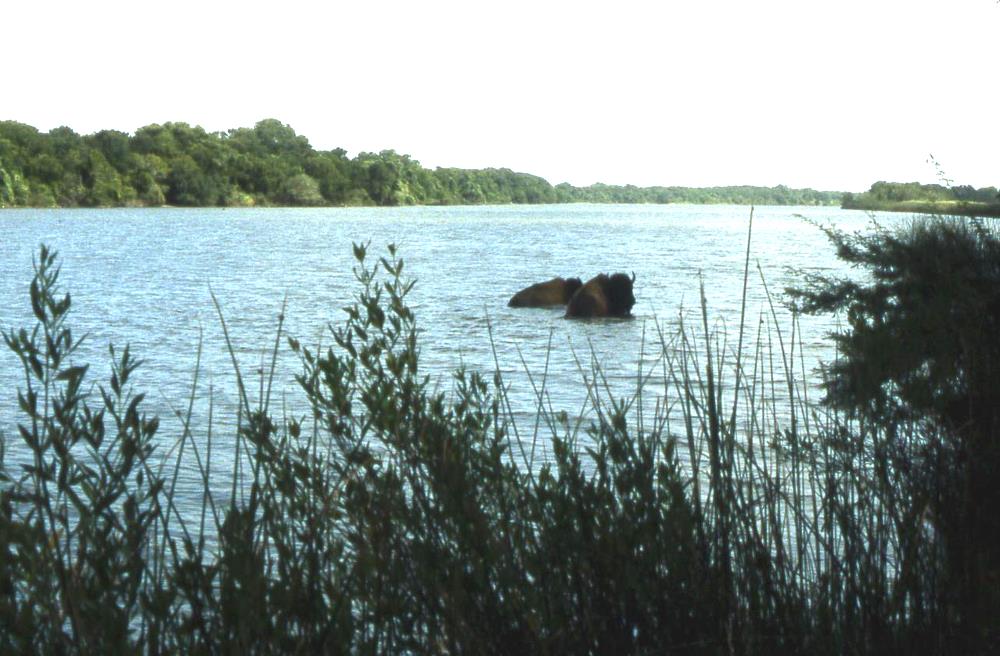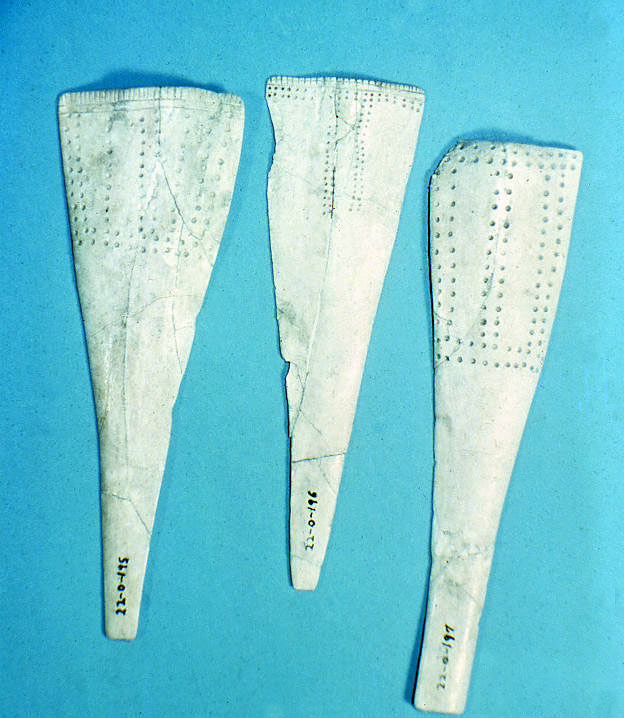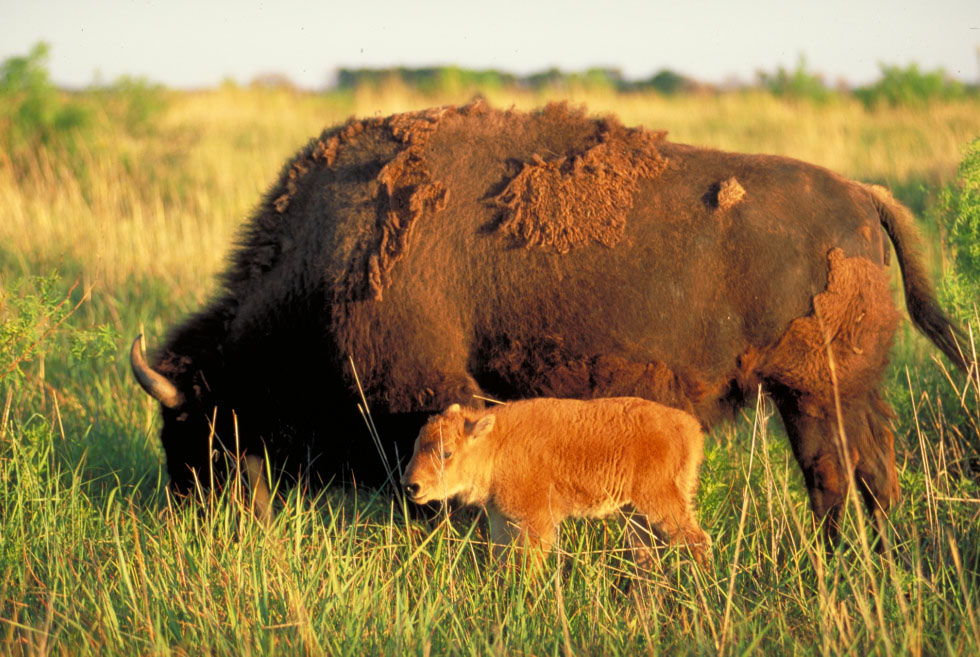Bison
The presence of bison, or buffalo, along the Texas coast was directly influenced by climate, specifically when conditions became cooler and more moist. As the environment responded, periodically changing from dry scrubland to grassland, bison migrated down to the interior of the Texas coastal plains. Based on archeological findings, bison were most abundant on the coast during the Paleoindian period (12,000-9000 B.C) and Late Prehistoric (A.D. 1300-1600) periods. The later time period, termed the Toyah horizon, saw an increase in toolkit specialization associated with deer, antelope, and bison processing. Although they were not a significant factor in the overall prehistoric subsistence strategy of the coastal Natives, bison were readily exploited when available.
Bison hunts required planning and labor, resulting in large expenditures of energy; unsuccessful hunts could plunge the Natives into a further state of starvation. To help mitigate this problem, tribes would often work as a collective whole to help corral and dispatch the massive bison. During times of high bison concentrations, toolkits also evolved from multipurpose foraging toolkits to specialized hunting and meat processing toolkits. Therefore, the cycles of large mammal presence/absence forced the inhabitants of the Prairies and Marshlands to be dynamic peoples willing to adapt subsistence strategies to maintain the highest caloric return.
Bison were a veritable cornucopia for the prehistoric hunter. Hides and sinews were stripped to make clothes and shelters, and bones were used for tools, art, and grease. The amount of meat and hide— most bison weigh around a ton— would keep a family fed and warm for quite some time. At the Swan Lake Site (41AS16) several bison remains were found with Perdiz projectile points, which is part of the Toyah toolkit. At the Roddfield Site (41NU29) bison scapulae found in a burial were incised with geometric designs from a pump drill. This evidence suggests the lower Texas coast had a larger bison population than the marshlands of the central and upper Texas coast.


